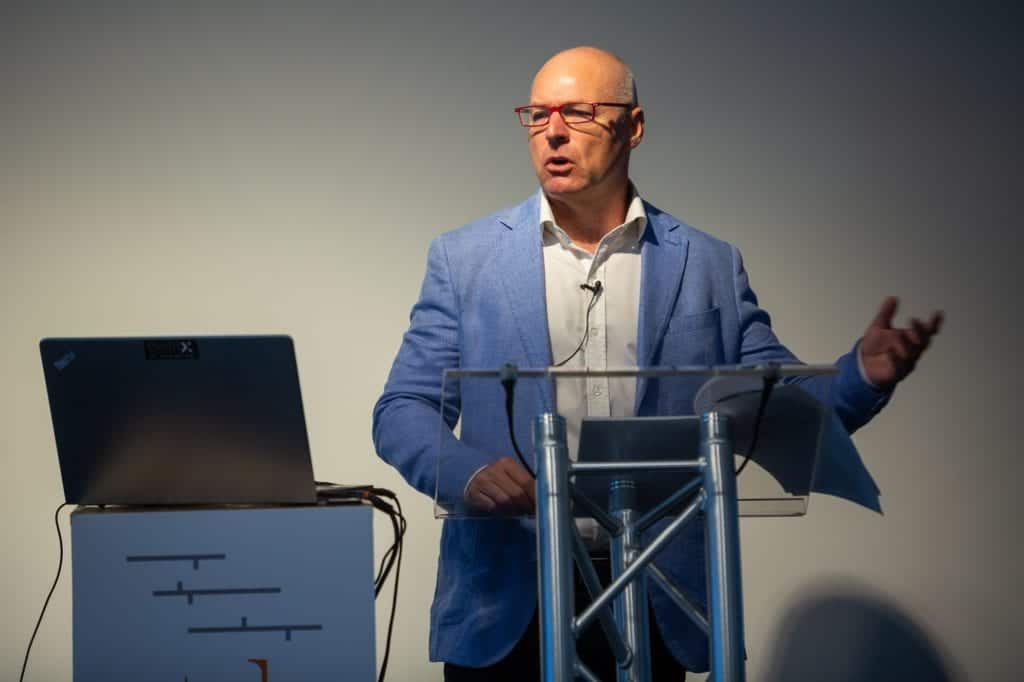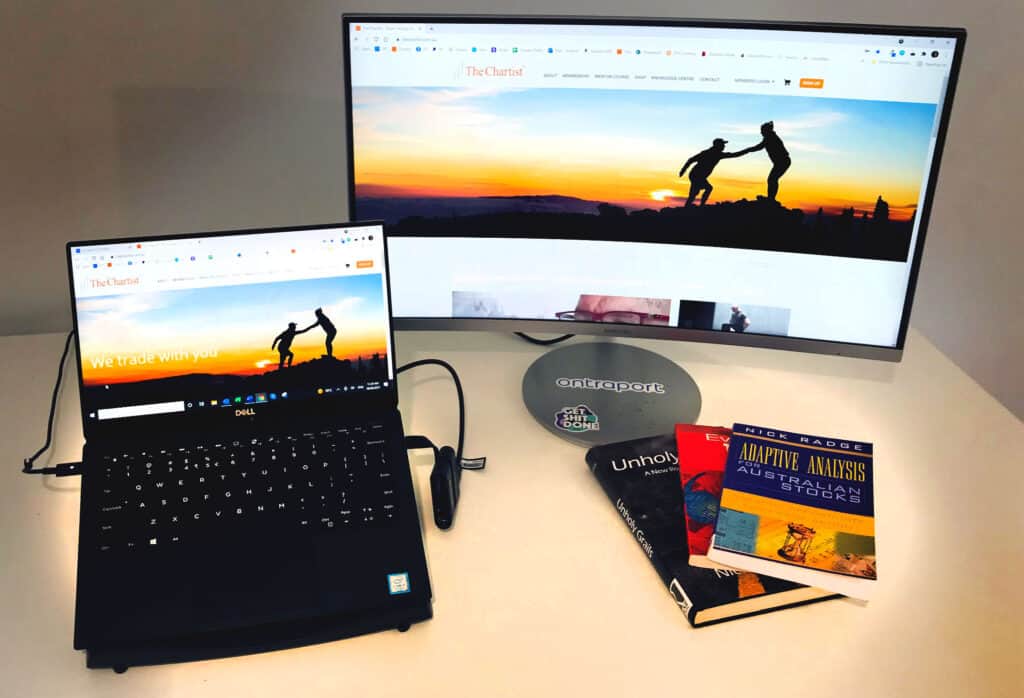Stop Losses: It’s a Science. Nick Radge Explains

It’s easy to buy shares but when do you sell? How many times have you bought a share, cheered as the share price rose then felt confused as the price head slowly south? Have you heard of a stop loss?
When should you sell?
Should you wait and see if the share price will turn around? But how long should you wait?
Or cut your losses and move on?
Here it is; A practical guide to stop losses.
Learn to maximise your risk adjusted returns and protect your capital.
Maximise Risk Adjusted Returns
I constantly get emails from people who are fearful of the markets. They’re worried about volatility, worried about China debt, worried about rising interest rates, worried about Trump, worried about some impending stock market crash. Yet because they’re worried, they’re making strategic mistakes. They’re not thinking rationally. Decisions are being made on a whim and this causes frustration and significant financial pain.
Recently we surveyed 1,000 retail traders from our database and we found three common hurdles that stop them having the success that they should be having. And one of those hurdles is not knowing when to sell. Look, I get that. Buying is the easy part, but so many people don’t know when to sell. That’s the part that separates people that succeed from those that don’t.
Your brain is biologically wired to not let you exit trades that are not working out for you. So the question is, at what point do you cut a loss? At what point do you lock in a profit? So stop-losses, you either use them or you don’t. Now you know the story. When you do, you’re watching horror as the stock turns, does a 180 and goes straight back up again. Or if you don’t use them, you get banned at the state. So which is it? Do you use them or not?
Now, recently I’ve got an email. I’ve got two emails from a couple of gentlemen, which is what’s prompted this training. I got an email from Tim who was worried that when a stock moved more than 5% against him and he thought 5% leeway was enough and should be his stop-loss level. Well, I can assure Tim that’s going to cost him close to $86,966 in profits over 10 years. And another from Paul who suggests all great traders only use a 10% stop-loss. Well, that may be the case, but Paul still stands to missing out on over $115,568 worth of potential profits.
So regardless of what you read or hear as a private investor, you need to remove wild guesses about how and when to sell. You need to take full control of your investments. Stop the hoping. Stop the frustration. Stop the misery. And importantly, you’ve got to stop gambling with your own capital. Why not become more scientific about it? Managing your exits and your stop-losses? Why not find the optimal balance point to maximize profits yet minimizing the downside? Doing so will remove unwarranted fear so you become a bit calmer, less frustrated, and more profitable trader, which is what we all want.
When I exit a stock, the trade is finished. I don’t worry about what was or what could be. It’s done. My mind is free. I can move onto the next trade. And the only way I can do this is from knowing that my stops are in the best possible position to maximize profits and minimize losses. It seems simple to me because I’ve got into the habit of doing it, but it gets easier over time and you too can get in the same position.
Using Stop Losses
Let’s take a look at BlueScope and it shows a very typical kind of trend. One that we all want to catch and ride for big profits. If we applies Tim’s logic, that is specifically using a 5% stop-loss, we can actually see how much noise is taking place each. Each zig and zag you can see in this chart represents a minimum 5% move. So Tim would need to be deadly accurate with his entry in order to write any kind of meaningful trend. Otherwise he risks capturing the noise or that zigging and zagging going around. And in my view it’s highly unlikely that he’s going to catch any smooth trend. And you can see why he would get frustrated. That’s 22 dibs of 5% or more during this one bigger trend. Most of that is noise.
What about Paul? This chart here suggests a 10% stop-loss, which is what the so called experts would use, certainly a little bit better. He reduces the noise somewhat and he can probably catch some better moves, but still unlikely to catch any major moves. Still a lot of 10% zigs and zags. So the question is, how much zig and zag can we have to ride those big trends without giving back too much profit or getting caught up in the noise of the day-to-day market action?
To prove the point here, let’s use a very simple strategy to find the possible or the best optimal point to maximize profits with them a minimum amount of loss. Remember, it’s a balancing act. Obviously we always want to have the maximum profit for no loss but doesn’t work like that. So we have to find a balancing point that we’re happy with. Now we use a computer and we’re going to do this test across 2,000 different stocks. And it’s important to understand that not every stock will be optimal or perfect. We don’t want to be optimal because every stock changes their personalities over time. You’ll just be chasing your tail. What we need to do is find a robust level across all stocks, which will be more likely to continue to work into the future.
We’re going to use this simple strategy and we’re going to buy a new yearly highs. So that’s a high point at 240 days, we’re going to exit when the price falls N%, and we’re going to test N% being between five and 50%. And we’re going to test out all ordinaries plus all delisted stocks and we’ll go back to 2000 to have a look at that. So a pretty simple kind of strategy, but what you’ll find is the same thing will occur on most types of strategies. There’ll be slight variances, but this is to prove the point of finding that optimal point.
Let’s start with profits. Everyone enjoys making a profit. But let’s just say that’s quite a one side of view of the world. Everyone loves making a profit, but it seems nobody likes making losses. And if no one likes making losses, we should actually ideally be looking at the risk side as well, not just the reward side, which we will do very, very shortly.
Now, this chart is very important for a number of reasons. Let me just explain what we’ve got going here. Across the bottom, we’ve got the various stock levels. So we start at 5% all the way up through to 50%. so we’re buying a 240-day high new yearly high and we’re placing a stop-loss. And depending on the stop-loss, we will see our annualized return on trading that portfolio.
Now a very important thing to understand what we’re seeing here, you can see that there is a big degradation of performance from about this point. In fact, we could almost say straight across here really anywhere from that 15% up to 50% the reward is more or less the same. Yeah, there’s a little bit of a spy cap around here and that’s the optimal place that we want to trade. And interestingly that sits at around the 30% mark.
However, if we look at what’s actually going on compared to what Tim and Paul were wanting, you can see Tim here is actually only getting up to six and a half percent return because that 5% trailing stop is what he feels is best. And you can see here we’ve got 10% right here and that’s where Paul would be sitting. So you can see they are underperforming greatly on what is potentially available to them. So let’s move forward now because that’s the reward side and we need to look at the risk side as well. Here’s the risk, and again, you can see a similar kind of pattern. Now interestingly, that shape is more or less like that. So in terms of risk, the optimal level seems to be in this region here, which sits somewhere between 15 and 20%.
And again, interestingly enough, if we use the 5%, well we’re still getting a pretty hefty risk right there, and the 10% is in here, that’s not too bad. So there’s a bit of a flat spot running through this area right here. And that’s where potentially we could go to get the optimum kind of risk reward if you like, which we’ll see on the next chart. So here we’re talking about the downside. Obviously out here, what’s going on is that you’re giving a lot more open profit back. Yes, you’re getting some good reward, but the drawdown starts to become quite serious. So again, it’s quite interesting that the logical place, that tight place to have your stop-losses in here is actually significantly riskier than giving a little bit more leeway out this way. And we saw that with returns as well.
So let’s put the two together now and this gives us a much better idea. This gives us the optimal point if you like, and this is a metric known as the MAR ratio. MAR ratio is the maximum risk or drawdown in this particular case, divided into the annual return. The higher the number, the better. You get more bang for your buck. So again, what we’ve got across the bottom of the screen here is the stop-loss level, five to 50%, and this is the MAR ratio. What we want to do is have the highest point possible.
And again, kind of what we’ve got here is this flat spot running across the top right here. So really anywhere in here is pretty good. The optimal area looks to be around these points here, which sit around that 20% to 25% in that area right there. But again, if we go back and we have a look at what Tim and Paul think is optimal, well you can see they’re not getting too much in terms of bang for buck. They’re right down in this area here. In other words, they’re taking on more risk or they’re not getting enough return. So their risk reward ratio or their MAR ratio is actually pretty poor, significantly poorer than if they give a little bit more room. This will give you a little bit of unexpected insights specifically about the number of trades.
Market Noise
What this chart relates to is the noise of the market. The market contains a lot of noise, the tight your stops, the more noise you will actually capture. So if you have very, very tight stops, I only 5%, well, it’s not going to take too much for you to get stocked out because most stocks move backwards and forwards very quickly in that 5%. Even at 10%, you get a lot of stocks moving backwards and forwards in a 10% range. It’s only once you start getting out beyond that region where that noise starts to disappear. So again, it’s a matter of not making your broker rich. It’s a matter of doing as less trades as possible, but optimizing your risk adjusted return. With that in mind, here’s a few takeaways.
It’s important to distinguish between signal and noise. The signal is being on that properly defined bigger term trend that you’re wanting to catch. That’s the signal, as opposed to those small ups and downs or those zigs and zags, which is noise or false trend.
Secondly, reducing the stop drastically decreases the risk of adjusted return. So it’s an intuitive reaction. It’s a logical reaction to have a tighter stop. But over the longer term, it’s actually a pretty costly exercise. If the strategy is reasonably robust, meaning that if the market changes over time, which will occur, then the current parameter settings can cope with those changes. For example, with the growth portfolio, we monitor these over time and we make very, very minor changes to compensate. So the strategy changes so slightly over the longer term depending on how the market changes.
Now, if you’ve got any questions about this very short training episode, I’ll be happy to answer them for you.
Nick Radge has been trading for over 30 years. Read: 10 Simple Tips that Give Me a Trading Edge

